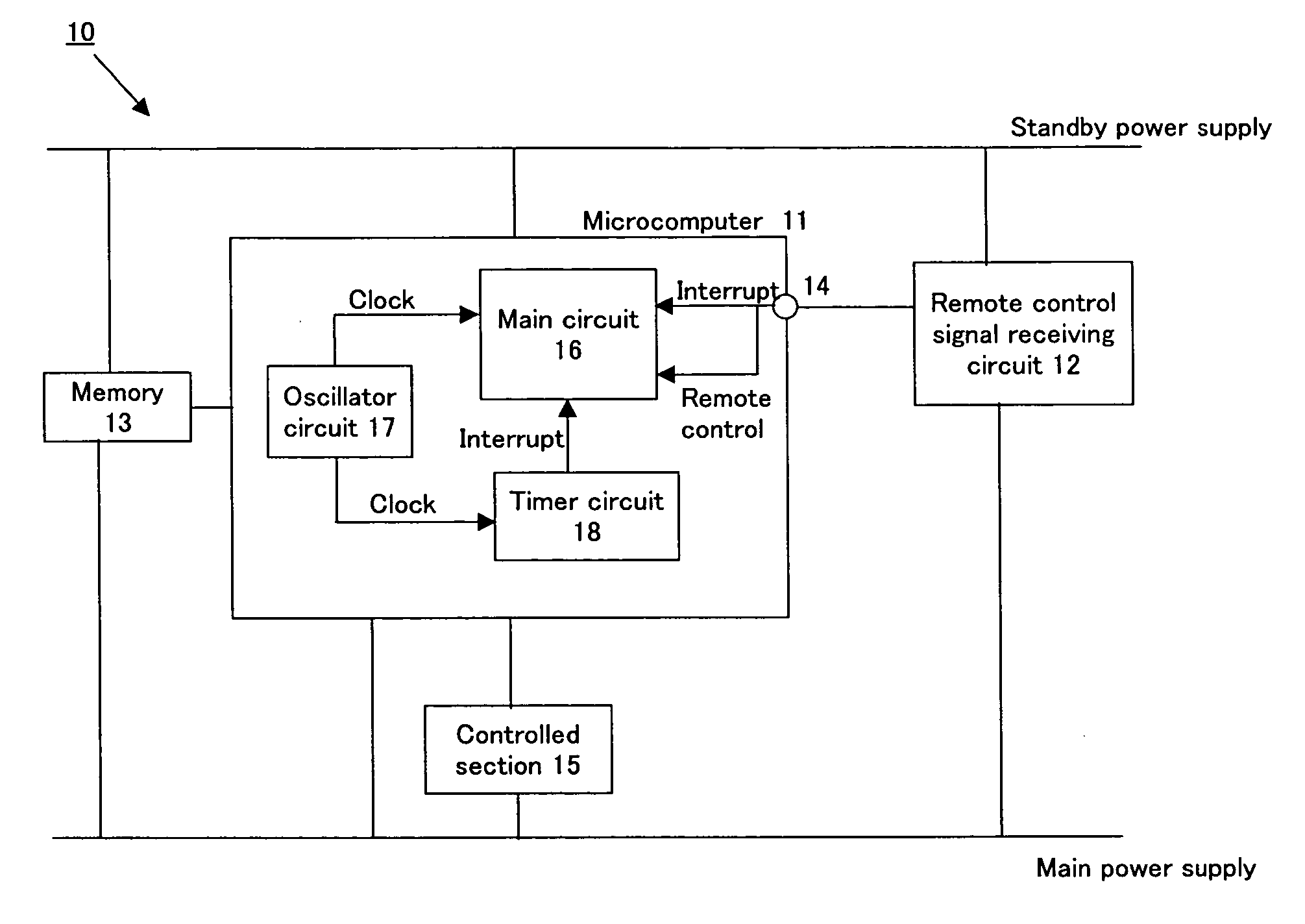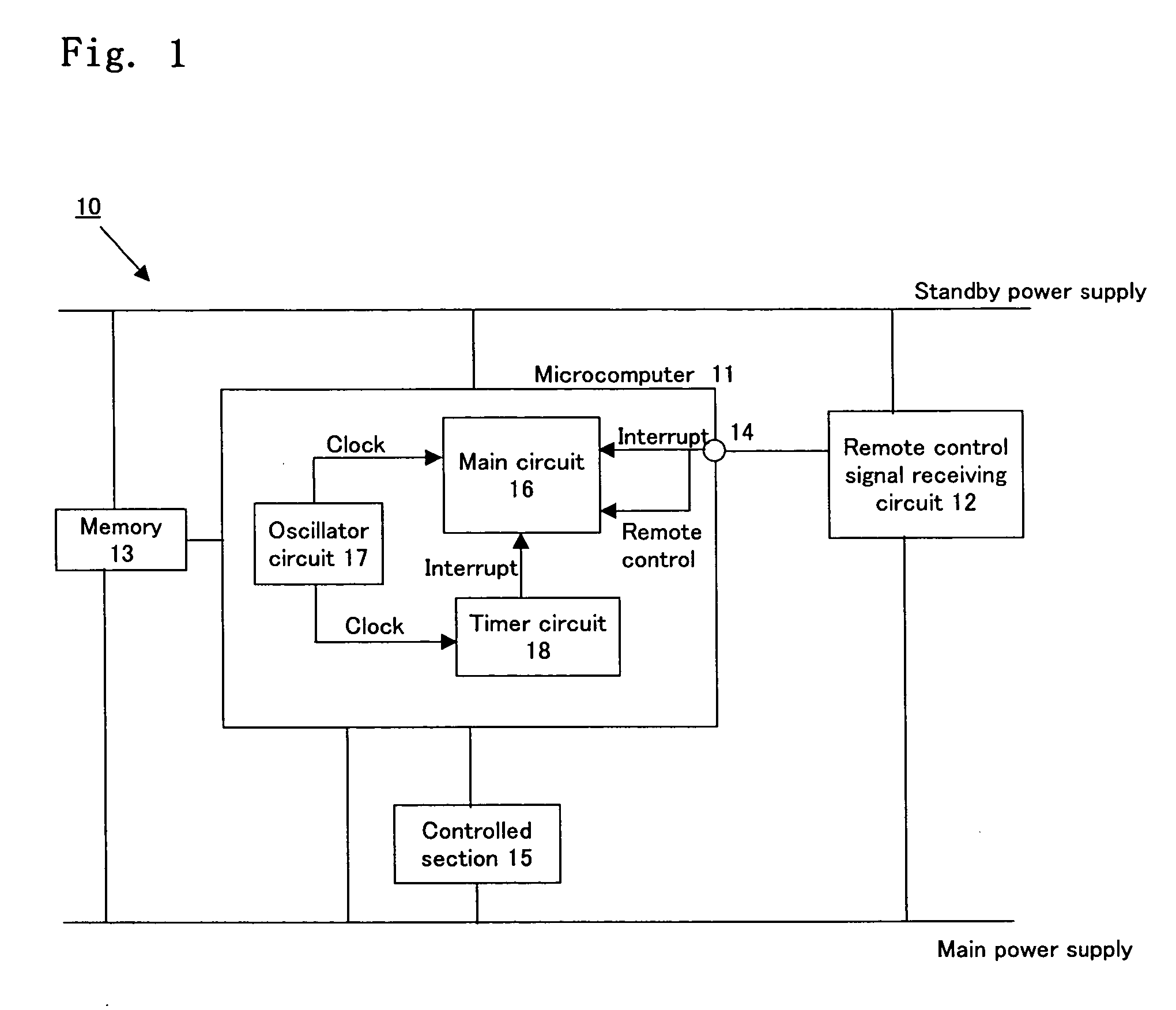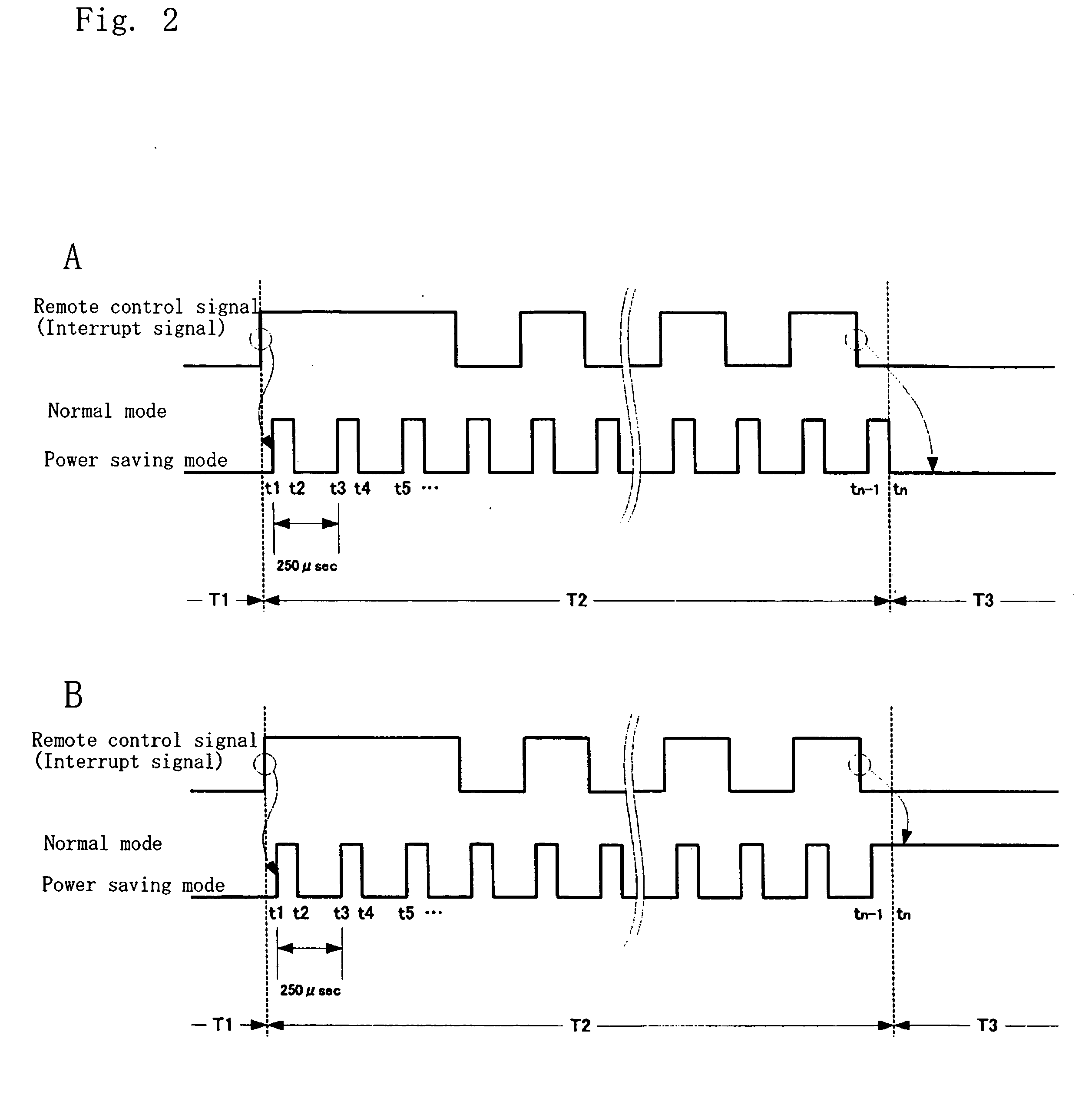Power saving device and electronic device using the same
- Summary
- Abstract
- Description
- Claims
- Application Information
AI Technical Summary
Benefits of technology
Problems solved by technology
Method used
Image
Examples
Embodiment Construction
[0023] While a preferred embodiment of the present invention will now be described with reference to the drawings, it is understood that the present invention is not limited thereto. FIG. 1 is a schematic block diagram showing a power saving device 10 according to the preferred embodiment of the present invention. The power saving device 10 includes a controller 11 and a remote control signal receiving circuit 12, and transitions from the power saving mode to the normal mode in response to a received interrupt signal. The power saving device 10 can be used in a common electronic device such as a CD player.
[0024] The controller 11 controls the overall operation of an electronic device (e.g., a CD player) with which the power saving device 10 can be used (i.e., it controls a controlled section 15), and is typically a microcomputer, for example. The microcomputer 11 includes a memory 13 (e.g., a ROM and / or a RAM), which may be provided in the microcomputer 11 or may be provided outsid...
PUM
 Login to view more
Login to view more Abstract
Description
Claims
Application Information
 Login to view more
Login to view more - R&D Engineer
- R&D Manager
- IP Professional
- Industry Leading Data Capabilities
- Powerful AI technology
- Patent DNA Extraction
Browse by: Latest US Patents, China's latest patents, Technical Efficacy Thesaurus, Application Domain, Technology Topic.
© 2024 PatSnap. All rights reserved.Legal|Privacy policy|Modern Slavery Act Transparency Statement|Sitemap



